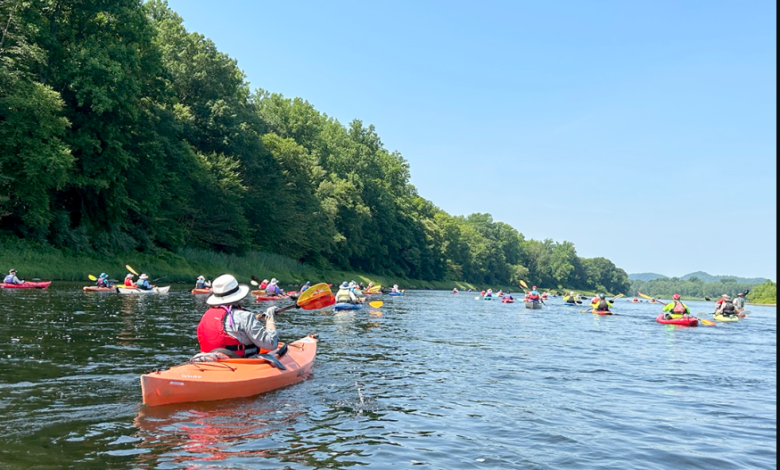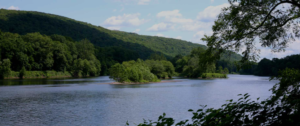Exploring the Majestic Delaware River: A Journey Through History and Nature

The Delaware River
stands as one of the most iconic waterways in the United States, weaving its path through history, culture, and natural beauty. Stretching approximately 330 miles from its source in the Catskill Mountains of New York, it winds its way through Pennsylvania, New Jersey, and Delaware, eventually emptying into the Atlantic Ocean at the Delaware Bay. This majestic river offers a plethora of experiences, from recreational activities to historical exploration, making it a vital natural resource and a cherished destination.
Historical Significance of the Delaware River
Early Native American Inhabitants
Long before European settlers arrived, the Delaware River was a lifeline for various Native American tribes, including the Lenape, who thrived along its banks. The Lenape people, also known as the Delaware Indians, relied on the river for sustenance, transportation, and trade. Their deep connection to the land and water is evident in the many artifacts and historical sites that dot the river’s course.
Colonial Era and Revolutionary War
The Delaware River played a crucial role in the early colonial history of America. In 1609, the Dutch explorer Henry Hudson became one of the first Europeans to navigate its waters. The river later became a significant trade route for the colonies, fostering economic growth and settlement along its banks.
One of the most famous events in American history, George Washington’s crossing of the Delaware River on Christmas night in 1776, marked a turning point in the Revolutionary War. This daring maneuver led to a surprise attack on the Hessian forces in Trenton, New Jersey, and ultimately boosted the morale of the Continental Army.

Industrial Revolution and Beyond
The advent of the Industrial Revolution transformed the Delaware River into a bustling corridor of commerce and industry. The river facilitated the transport of goods and raw materials, contributing to the economic development of cities like Philadelphia, Camden, and Wilmington. The Delaware Canal, completed in 1832, further enhanced the river’s importance as a commercial waterway.
Ecological Wonders of the Delaware River
Rich Biodiversity
The Delaware River is home to a diverse array of plant and animal species, making it a vital ecological region. Its waters support various fish species, including striped bass, shad, and American eel. The river’s banks are adorned with lush forests, wetlands, and meadows, providing habitat for countless birds, mammals, and amphibians.
Protected Areas and Wildlife Reserves
Several protected areas and wildlife reserves along the Delaware River ensure the preservation of its natural beauty and biodiversity. The Delaware Water Gap National Recreation Area, spanning over 70,000 acres, offers visitors a chance to explore pristine forests, waterfalls, and scenic vistas. Additionally, the John Heinz National Wildlife Refuge at Tinicum serves as a critical sanctuary for migratory birds and other wildlife.
Efforts in Conservation
Conservation efforts have been instrumental in maintaining the health of the Delaware River ecosystem. Organizations like the Delaware River Basin Commission (DRBC) work tirelessly to monitor water quality, manage resources, and promote sustainable practices. These efforts have led to significant improvements in water quality and the restoration of aquatic habitats.
Recreational Opportunities on the Delaware River
Boating and Kayaking
The Delaware River offers a myriad of recreational activities for outdoor enthusiasts. Boating and kayaking are particularly popular, with numerous access points and boat ramps available along the river’s course. Paddlers can enjoy tranquil stretches of water, navigate through gentle rapids, and explore hidden coves and islands.
Fishing
Anglers are drawn to the Delaware River for its abundant fishing opportunities. The river’s diverse fish population provides ample chances to catch species like smallmouth bass, trout, and catfish. Fishing tournaments and events are frequently held, attracting participants from near and far.
Hiking and Camping
The surrounding landscapes of the Delaware River offer excellent hiking and camping experiences. Trails like the Delaware Canal Towpath and the Appalachian Trail provide scenic routes for hikers of all skill levels. Campgrounds along the river allow visitors to immerse themselves in nature and enjoy the tranquility of the great outdoors.
Cultural and Educational Attractions
Historical Landmarks
The Delaware River corridor is rich with historical landmarks that offer a glimpse into America’s past. Historic towns like New Hope, Pennsylvania, and Lambertville, New Jersey, boast charming architecture, antique shops, and cultural festivals. Fort Delaware State Park, located on Pea Patch Island, preserves a Civil War-era fortress that once housed Confederate prisoners.
Museums and Educational Centers
Museums and educational centers along the Delaware River provide valuable insights into the region’s history and ecology. The Independence Seaport Museum in Philadelphia showcases maritime artifacts and exhibits on the river’s role in American history. The Delaware River Watershed Education Center offers programs and activities that educate visitors about the importance of watershed conservation.
Challenges and Future Prospects
Environmental Threats
Despite its many attributes, the Delaware River faces several environmental challenges. Pollution from agricultural runoff, industrial discharges, and urban development poses a threat to water quality and aquatic life. Climate change and rising sea levels also present long-term risks to the river’s health and stability.
Community and Policy Initiatives
Addressing these challenges requires a collaborative effort from communities, policymakers, and environmental organizations. Initiatives aimed at reducing pollution, promoting sustainable land use, and enhancing climate resilience are essential for safeguarding the future of the Delaware River. Public awareness and engagement play a crucial role in fostering a culture of conservation and stewardship.
Conclusion
The Delaware River is more than just a body of water; it is a living testament to the rich history, vibrant ecology, and boundless recreational opportunities that define the region. From its early Native American inhabitants to its role in shaping the nation’s history, the river has been a vital force in the lives of countless people. Today, it continues to inspire and captivate those who visit its shores.
Whether you are an adventurer seeking outdoor thrills, a history buff exploring the past, or a nature lover immersing yourself in the beauty of the natural world, the Delaware River offers something for everyone. Its legacy as a vital waterway and its enduring natural splendor ensure that it will remain a cherished destination for generations to come.





